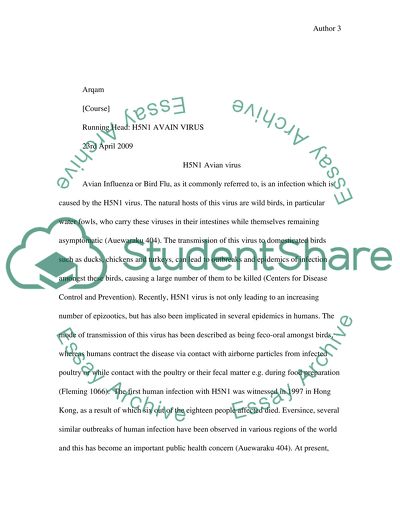Cite this document
(H5N1 Avian virus Essay Example | Topics and Well Written Essays - 1750 words, n.d.)
H5N1 Avian virus Essay Example | Topics and Well Written Essays - 1750 words. https://studentshare.org/biology/1505227-h5n1-avian-virus
H5N1 Avian virus Essay Example | Topics and Well Written Essays - 1750 words. https://studentshare.org/biology/1505227-h5n1-avian-virus
(H5N1 Avian Virus Essay Example | Topics and Well Written Essays - 1750 Words)
H5N1 Avian Virus Essay Example | Topics and Well Written Essays - 1750 Words. https://studentshare.org/biology/1505227-h5n1-avian-virus.
H5N1 Avian Virus Essay Example | Topics and Well Written Essays - 1750 Words. https://studentshare.org/biology/1505227-h5n1-avian-virus.
“H5N1 Avian Virus Essay Example | Topics and Well Written Essays - 1750 Words”. https://studentshare.org/biology/1505227-h5n1-avian-virus.


